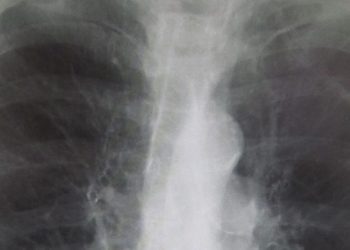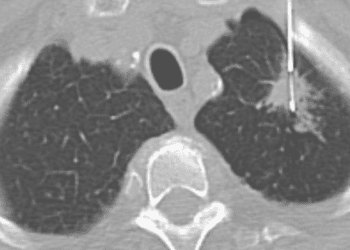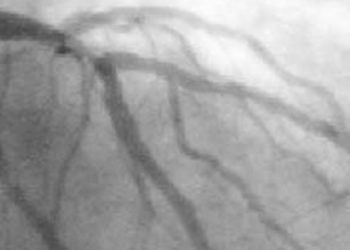COPD patients show substantial variation in lifetime rate of decline
1. The reigning paradigm of COPD pathogenesis is that there is an accelerated decline in forced expiratory volume in 1 second (FEV1) in susceptible individuals.
2. In this large cohort study, half of the patients diagnosed with COPD at the end of cohort follow-up had followed a normal decline of FEV1 from a low maximally attained lung function in early adulthood, suggesting an alternative paradigm for the pathogenesis of COPD.
Evidence Rating Level: 2 (Good)
Study Rundown: The classical paradigm for the underlying pathophysiology of chronic obstructive pulmonary disease (COPD) is an accelerated decline in FEV1 over time; this is thought to be due in many individuals to exposure to particulate matter, particularly tobacco smoke. In this study, the authors explore an alternative hypothesis in prospective, long-term cohorts: low maximally attained lung function in early adulthood can result in COPD later in life, even when there is a normal decline in FEV1.
Drawing on the collective data of three long-term cohort studies, the authors provided evidence to support this alternative hypothesis. Approximately half of the patients included in the overall cohort followed the accelerated decline in FEV1 from normal lung function in young adulthood (prior) trajectory, whereas the other half followed the trajectory of a low maximally attained lung function in early adulthood, followed by a normal decline in FEV1. Over 22 years of follow-up, the proportion of individuals who developed COPD at the end of study follow-up among those with a low maximally attained lung function in early adulthood was significantly greater than the proportion of individuals who developed COPD at the end of study follow-up among those with a normal lung function in early adulthood.
This study provided important information for the basic understanding of the pathophysiology and natural history of COPD, complicating a reigning paradigm. Limitations included the cohort design, which is prone to selection bias and regression to the mean. Furthermore, dichotomizing patients into stark categories (low vs. normal lung function attained in early adulthood, and COPD vs. no COPD at the end of the study) is arbitrary and unlikely to reflect the heterogenous individual trajectories followed over time.
Click to read the study, published today in NEJM
Relevant Reading: Long-Term Treatment with Inhaled Budesonide in Persons with Mild COPD Who Continue Smoking
In-Depth [prospective cohort]: This study involved participants from 3 separate cohort studies: the Framingham Offspring Cohort, the Copenhagen City Heart Study, and the Lovelace Smokers Cohort. Participants were stratified according to lung function attained in early adulthood (FEV1 ³ 80% or <80% of the predicted value, at approximately 40 years of age) and the presence or absence of COPD by GOLD criteria at the last study visit. These four categories of exposure and outcome allowed the authors to analyze 4 potential trajectories, between starting FEV1 function and a binary outcome of COPD versus no COPD. After an observation time of 22 years, 7% of 2207 individuals with normal baseline FEV1 (158) had COPD, compared to 26% of 657 with low baseline FEV1 who had COPD at the end of study follow-up (P<0.001 for the comparison between these proportions). In all, 48% of 332 individuals with COPD at the end of follow-up followed a trajectory from normal FEV1 in early adulthood to COPD at the end of follow-up, compared to 52% who followed a trajectory from low baseline FEV1 to COPD at study end. In line with this finding, the average decline in FEV1 was 53 versus 27 ml per year in these two groups (P<0.001 for comparison). The distribution of observed declines in FEV1 was substantially variable and overlapping across the four stratified cohorts.
Image: PD
©2015 2 Minute Medicine, Inc. All rights reserved. No works may be reproduced without expressed written consent from 2 Minute Medicine, Inc. Inquire about licensing here. No article should be construed as medical advice and is not intended as such by the authors or by 2 Minute Medicine, Inc.




![Adverse pregnancy outcomes associated with thrombophilias [Classics Series]](https://www.2minutemedicine.com/wp-content/uploads/2015/07/Classics-2-Minute-Medicine-e1436017941513-75x75.png)

